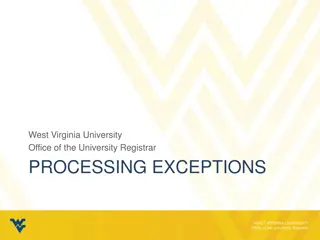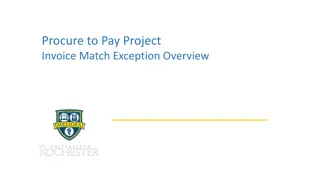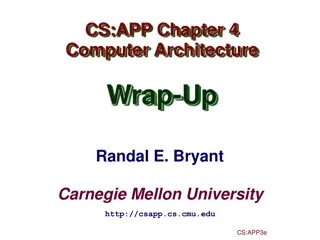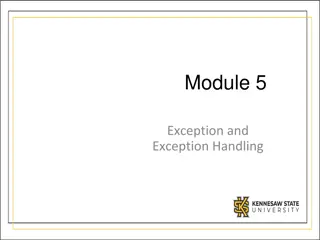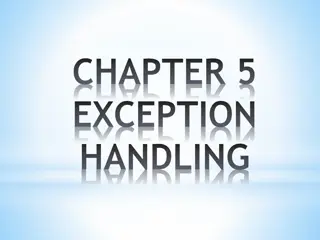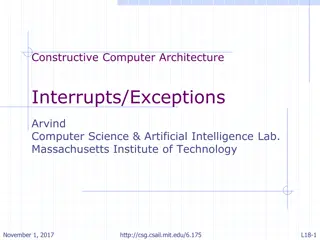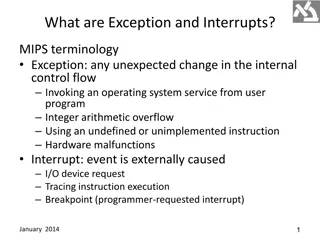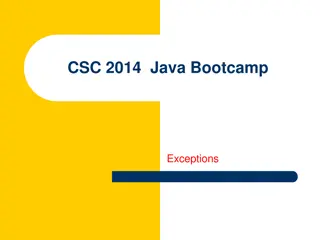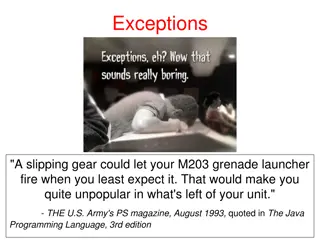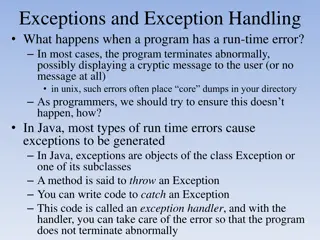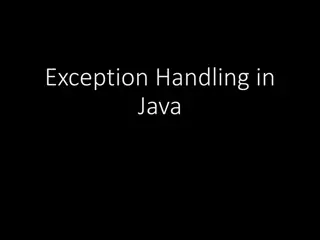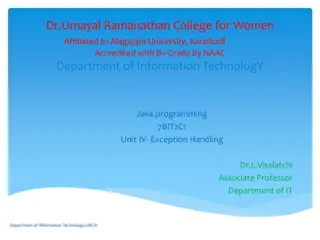Exceptions and Exception Handling
Exceptions in programming are runtime anomalies encountered during execution, such as division by zero, running out of memory, or accessing arrays outside their bounds. Exception handling mechanisms in C++ involve detecting, throwing, catching, and handling exceptions using try and catch blocks. Learn how synchronous and asynchronous exceptions are managed and the importance of proper exception handling in program execution.
Download Presentation

Please find below an Image/Link to download the presentation.
The content on the website is provided AS IS for your information and personal use only. It may not be sold, licensed, or shared on other websites without obtaining consent from the author.If you encounter any issues during the download, it is possible that the publisher has removed the file from their server.
You are allowed to download the files provided on this website for personal or commercial use, subject to the condition that they are used lawfully. All files are the property of their respective owners.
The content on the website is provided AS IS for your information and personal use only. It may not be sold, licensed, or shared on other websites without obtaining consent from the author.
E N D
Presentation Transcript
Bilal Zahoor Kashmir University North Campus
EXCEPTIONS Exceptions are run time anomalies or unusual conditions that a program may encounter during execution. Conditions such as Division by zero Access to an array outside of its bounds Running out of memory Running out of disk space It was not a part of original C++. It is a new feature added to ANSI C++.
EXCEPTION HANDLING Exceptions are of 2 kinds Synchronous Exception: Out of rage Over flow Asynchronous Exception: Error that are caused by causes beyond the control of the program Keyboard interrupts In C++ only synchronous exceptions can be handled.
EXCEPTION HANDLING (CONT) Exception handling mechanism Find the problem (Hit the exception). Inform that an error has occurred (Throw the exception). Receive the error information (Catch the exception). Take corrective action (handle the exception).
EXCEPTION HANDLING MECHANISM It is basically build upon three keywords try block try Detects and throw an exception throw Exception Object catch catch block Catch and handle the exception
EXCEPTION HANDLING MECHANISM (CONT) The keyword try is used to preface a block of statements which may generate exceptions. When an exception is detected, it is thrown using a throw statement in the try block. A catch block defined by the keyword catch catches the exception and handles it appropriately. The catch block that catches an exception must immediately follow the try block that throws the exception.
EXCEPTION HANDLING MECHANISM (CONT) try { throw exception; // Block of statements // which detect and throws an exception } catch(type arg) { }
EXCEPTION HANDLING MECHANISM (CONT) Exceptions are objects used to transmit information about a problem. If the type of the object thrown matches the arg type in the catch statement, the catch block is executed. If they do not match, the program is aborted.
THROWING MECHANISM The throw statement can have one of the following 3 forms throw(exception) throw exception throw //used to re-throw a exception The operand object exception can be of any type, including constant. It is also possible to throw an object not intended for error handling. Throw point can be in a deeply nested scope within a try block or in a deeply nested function call. In any case, control is transferred to the catch statement.
CATCHING MECHANISM The type indicates the type of exception the catch block handles. The parameter arg is an optional parameter name. The catch statement catches an exception whose type matches with the type of the catch argument. catch(type arg) { }
CATCHING MECHANISM (CONT) If the parameter in the catch statement is named, then the parameter can be used in the exception handling code. If a catch statement does not match the exception it is skipped. More than one catch statement can be associated with a try block.
CATCHING MECHANISM (CONT) try { throw exception; } catch(type1 arg) { // catch block 1 } catch(type2 arg) { // catch block 2 } catch(typeN arg) { // catch block N }
CATCHING MECHANISM (CONT) When an exception is thrown, the exception handlers are searched in order for a match. The first handler that yields a match is executed. If several catch statement matches the type of an exception the first handler that matches the exception type is executed. Catch all exception catch ( ) { // statement for processing all exceptions }
RETHROWING AN EXCEPTION A handler may decide to rethrow the exception caught without processing it. In such a case we have to invoke throw without any arguments as shown below throw; This causes the current exception to be thrown to the next enclosing try/catch sequence and is caught by a catch statement listed after the enclosing try block












